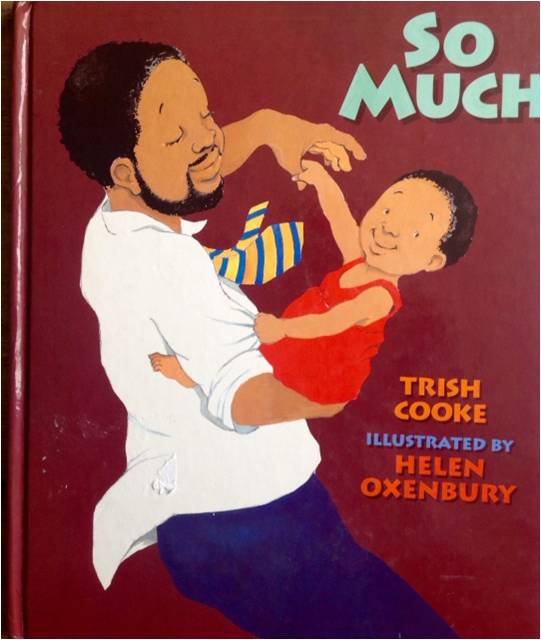Inspiring Young Readers
 posted on 06 Sep 2015
posted on 06 Sep 2015
So Much by Trish Cooke and Helen Oxenbury
As an ex nursery school teacher, I think that I would rate this as one of my all time favourite picture books. It tells a story with the baby as the central protangonist who is clearly adored by all his African Caribbean extended family. The author, Trish Cooke, provides a strong rhythm for the story both in her use of her Dominican dialect in the text and also the repetitive structure of the story. It starts with just the mother and baby sitting ' not doing anything really' and then the bell ringing ' ding dong'. As each new family member arrives , the waiting group grows and the pattern is repeated. I know from experience of reading the book many times to groups of engrossed three to five year olds that this is the perfect opportunity to join in. Even young babies soon tune in to the expected refrain - a really important aspect of an effective picture book in my view.
The story builds as more family members arrive to play, squeeze, fight, even 'eat' the baby because they all love him ' so much'. The final person to arrive is dad and then we learn that they are all gathered for his birthday party. In an interesting interview as part of the BBC 4 TV picture book series (sadly no longer available ) the illustrator, Helen Oxenbury describes how she spent some time researching the book by drawing people in Camden market. By sheer co incidence she drew the two exuberant gushing grandmothers, nanny and gran gran, to look uncannily like Cooke's real grandmothers! The warmth, love and energy in the central double page spread when the party is in full flow is wonderful. Somehow it conveys energy, laughter, music and the smell of good food - what a triumph of illustration!
In contrast to the vividly coloured pictures, the baby is drawn on the left hand pages in monochrome to convey how he is feeling which gives him further prominence in the story. For example, as the party is in full flow, it is bedtime and we see the familiar reluctance to leave the fun expressed very clearly on his cross little face. The realism continues as on the following page, he has shifted into another mode, happily jumping in the safety of his cot and remembering all the positive encounters of his busy day. On the final page we see both his parents watching him sleeping soundly. This is not at all sentimental but an affirmative, tender and poignant happy ending to a great classic picture book story.
Karen Argent
September 2015